Appearance
Automations
Automations are like blueprints - when they are applied to a Booking they create the Tasks that actually do the work. There are various kinds of Automations, described below.
When you change an Automation, this will change all Tasks that have been created by that Automation, but are scheduled to take place in the future. For example, if you delete an Automation, this will delete all future Tasks.
GOAL
The goal is to configure your Automations to meet your needs, turn them on and let them be driven by your Bookings.
Start by editing and turning on at least one Automation.
All Automations (except SMSs) start by sending the communication to you, the Host, so that you can check the content and forward to the Guest. When you're comfortable that it's correct, change the Communication Mode to send to the Guest immediately.
You can add new Automations or tweak existing Automations at any time.
Event Driven and Time Driven Automations
There are 2 categories of Automations: Time Driven and Event Driven. You can create a combination of these Automations, however we suggest you start with Time Driven Automations.
Time Driven Automations
Theses Automations are driven by the timings of a Booking. They are scheduled to run in relation to when:
- a Booking is placed
- the Guest will check-in
- the Guest will check-out
Event Driven Automations
These Automations are driven by Booking events:
- a Booking is updated
- a Booking is cancelled
Automations View
Time Driven Automations
Below is the layout of the Time Driven Automations tab of the Automations view (with no Automations). The content area is divided into 2 "columns" - one for the Booking Timeline, and one For Automations.
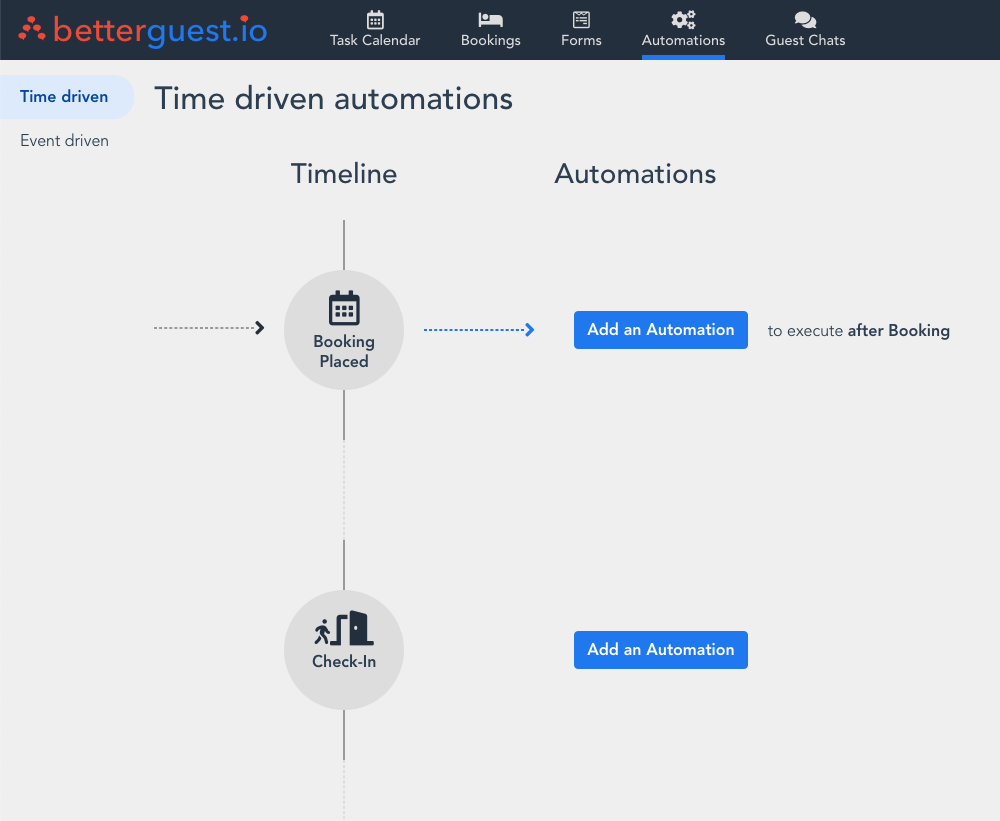
Once you have created a Time Driven Automation, it will appear in the Automations column, next to the appropriate timeline time, as can be seen in the case of the "Online Registration" Form Automation shown below. This Form Automation will take place immediately when a Booking is placed. The Automation is turned on / active (blue content area and on/off toggle).
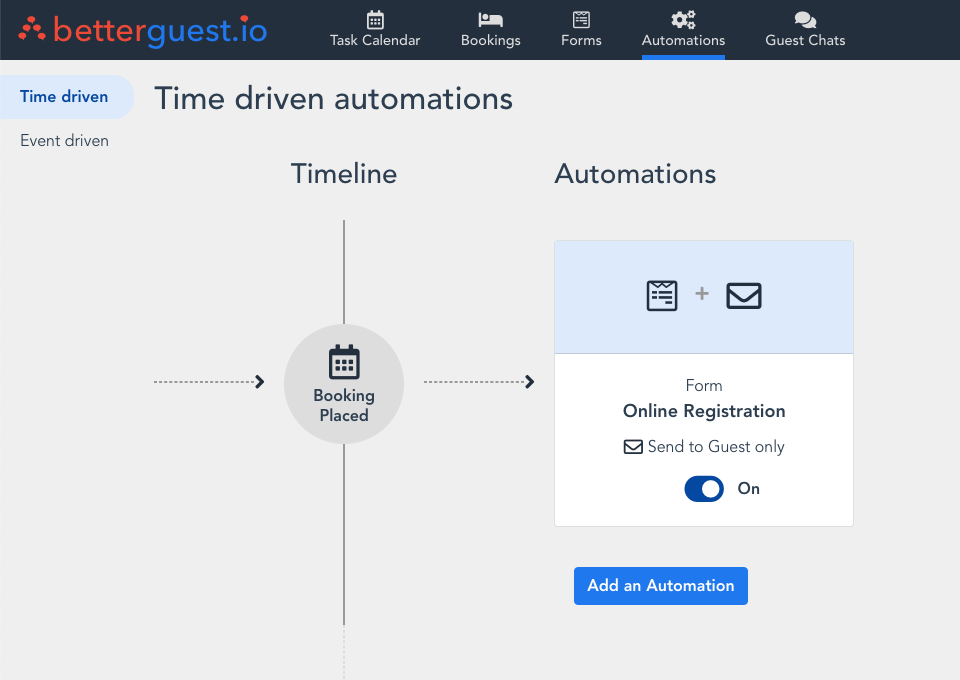
Event Driven Automations
This is the layout of the Event Driven Automations tab of the Automations view (again with no Automations). There is a "?" in Event column, indicating the type of event is currently unknown. This will change when an Automation is created.
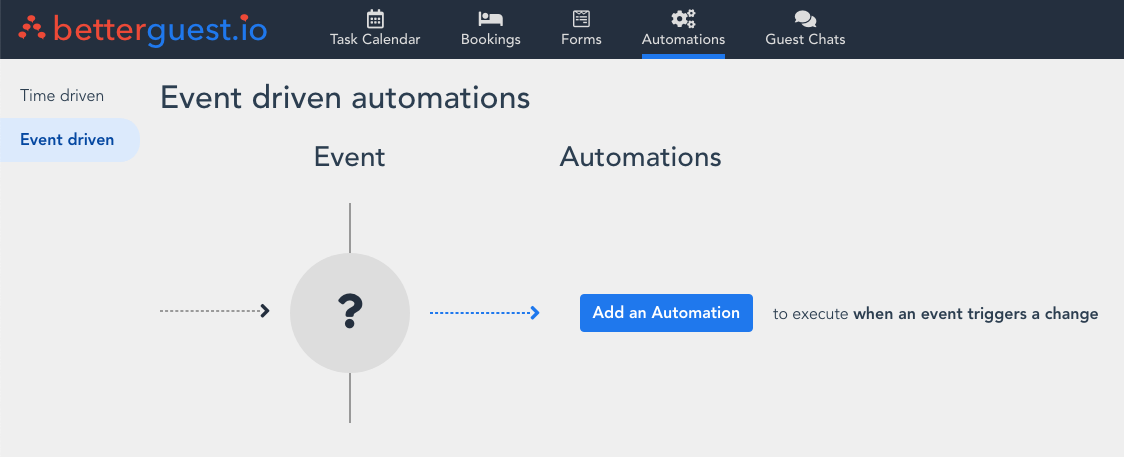
After creating an Event Driven Automation, it will appear in the Automations column, next to an event icon representing the event that drives the Automation, as can be seen in the case of the "Your booking has been cancelled" Email Automation below. This Email Automation will execute immediately when we are informed of a Booking cancellation. The Automation is turned off / inactive (grey content area and red on/off toggle).
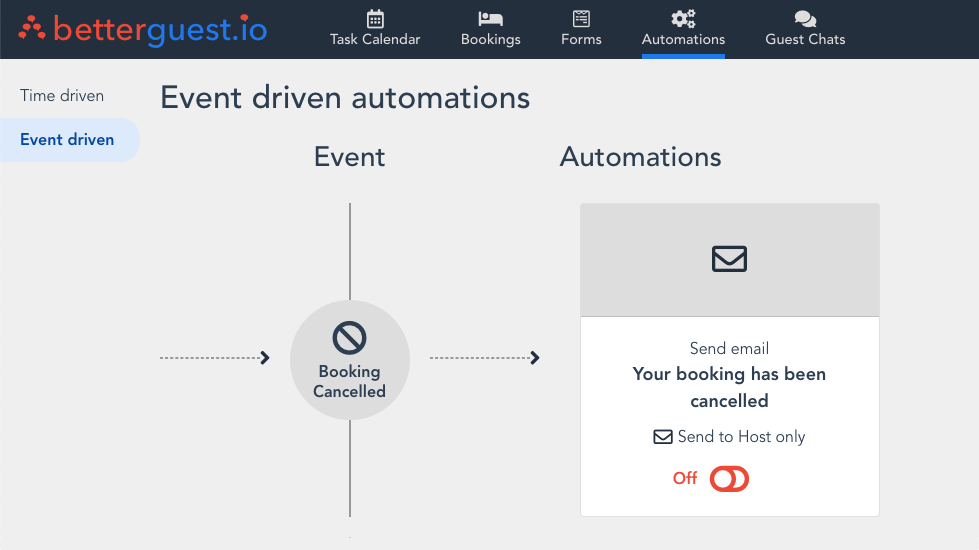
Types Of Automations
You can create 7 different kinds of Automations:
- Forms - ask a Guest to fill in a Form, typically before check-in or after check-out
- Emails - send an email to guest
- SMSs - send an SMS to a guest
- WhatsApps (coming soon) - send an WhatsApp to a guest
- Upsells - send an email to guests with upsell offers
- Front Desk Forms - a Form that is filled in at your front desk on check-in using your BetterGuest Front Desk app
- Todos - reminders for you to do things
FORMS ARE A COMBINATION
Form Automations actually contain an Email Automation as well, and optionally an SMS Automation. This is because you need to send communication to the Guest inviting them to fill in the Form.
Anatomy Of An Automation
There are various parts to an Automation. When you hover your mouse over the Automation (or tap on a Mobile device), the buttons change colour to become more prominent. Please see the screenshot below.
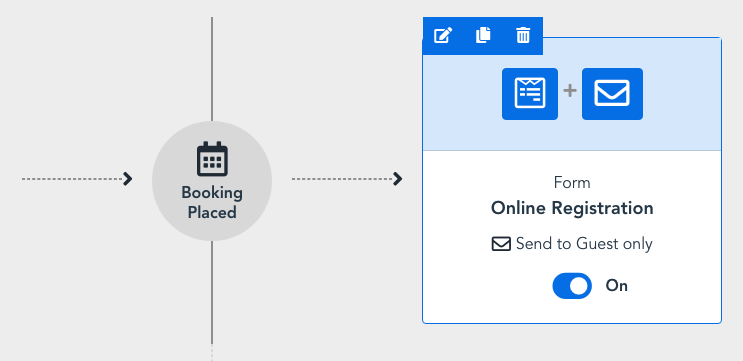
At the top left corner of the Automation are the Edit and Delete buttons.
In the top area of the Automation, are the content buttons, to edit the content. These will differ depending on the type of Automation you have created. In the example below, there is Form content and an Email content.
Below the content is information about the type of Automation, it's name, the Communication Mode and the on/off Toggle.